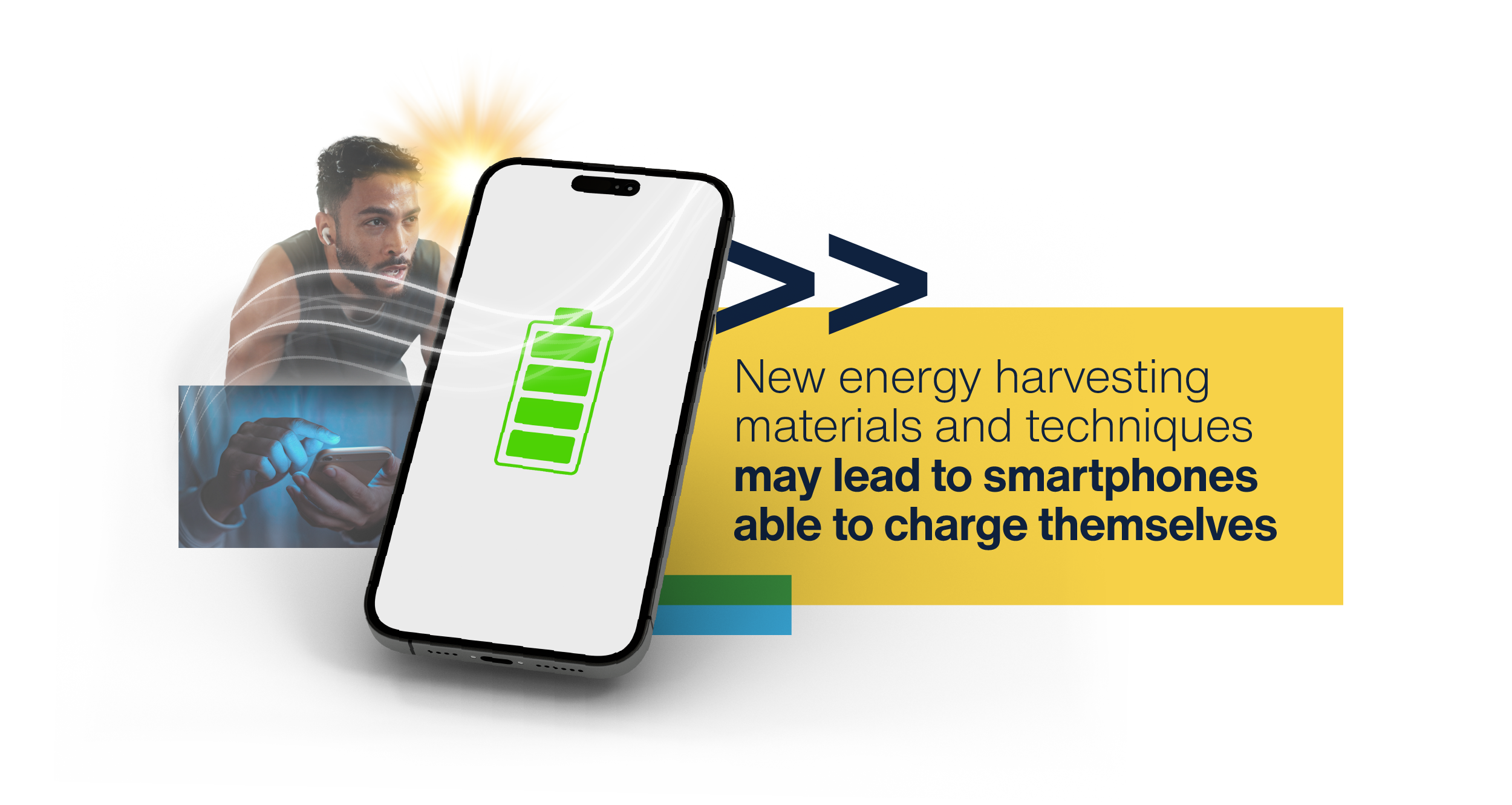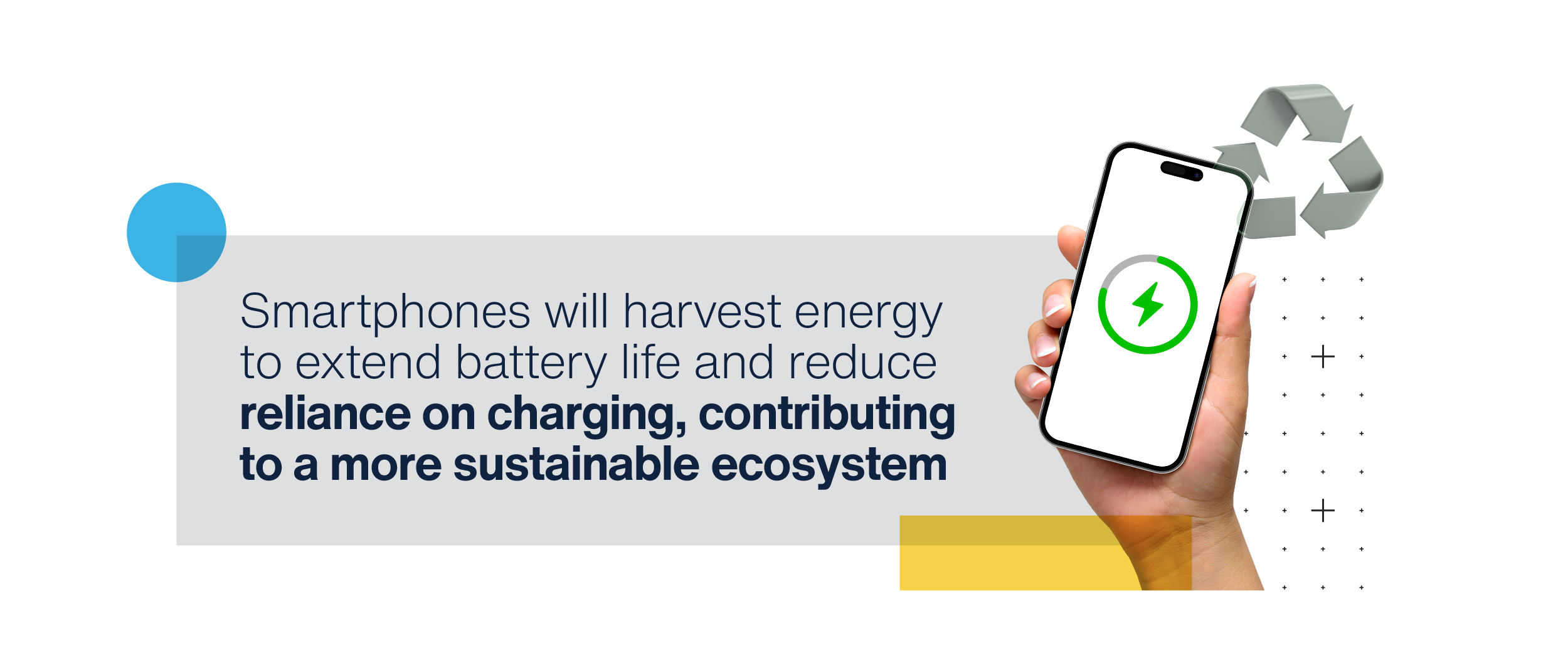Feed aggregator
Unipress orders Taiyo Nippo Sanso MOCVD platforms
Handy automatic zero reference for Hall effect probes

Many analog sensors today are designed to operate from a single power rail but produce output signal centered around approximately half of power supply voltage, linear hall effect sensors and MEMS accelerometers are few to name. But when their output is observed by oscilloscopes or measured by multimeters, it is desirable to bring the output centered around zero volts. This allows you to observe the physical parameters they sense with greater resolution without risking saturation of the scope or multimeter.
Figure 1 shows a simple circuit utilizing a non-volatile digital potentiometer that can be handy for automatically adjusting the zero-point virtual ground terminal of the scope with the push of a button, and keeping it steady even across power cycles.
Figure 1 Autozero circuit schematic diagram that allows the user to automatically adjust the zero-point virtual ground terminal of the scope with the push of a button.
Wow the engineering world with your unique design: Design Ideas Submission Guide
The typical application for this circuit is analyzing waveforms of the currents in a power inverter with a Hall effect DC current sensor, like SS49E, and any DSO. The sensor HE1 is ratiometric, its output is centered around Vcc/2, and the voltage difference is proportional to a product of the magnetic field and Vcc. The typical bandwidth of the sensor is 200 kHz.
A floating ~6 V battery powers the probe, and the accurate Vcc required for a calibrated conversion factor of the sensor is generated by an optional micropower LDO U4. I tried to use low-power components to extend battery life.
The adjustable reference voltage is produced by digital potentiometer U1, with its wiper driving virtual ground buffer amplifier U2B. Its output is connected to the “ground” terminal of an SMA output connector for connection to a scope or multimeter, so that the sensor output observed on CON2 is centered around zero.
The auto adjustment is performed by comparator U2A, driving the “up/down” direction input of the potentiometer. It will move the wiper tap up or down on every clock of the clock generator U3, depending on the voltage difference between the sensor output and virtual ground. When the clock generator runs at ~1.5 kHz, the tap will move to the point of balance within 100 ms and will oscillate within one tap around the balance point.
The clock generator does not run continuously. The FET Q2 will release it only when SB1 is pressed momentarily, pulling the CS signal low to enable updates of the potentiometer. There is no special timer on the enable signal for simplicity. When the button is released, all signals are parked at a high level, resulting in an update of the non-volatile setting of the potentiometer.
It is desirable to eliminate any switching within the circuit to eliminate noise, especially when sensitive measurements are needed. Q2 disables the clock oscillator, and Q1 disables the comparator to achieve that when SB1 is not pressed.
The optional R1 and D1 may help observe how the circuit reaches balance—its brightness will be half of the maximum at the balance point.
The range of balance is selected by R3, R5, and R7, which set the voltage between the upper and lower end of the resistor string in a digital potentiometer. With the values shown in the schematic, it is ~0.24 V, and the wiper steps are ~2.4 mV. The user may vary these values to set the optimum range and resolution of adjustment.
The autozero circuit may compensate for small bias and temperature drift. Press SB1 whenever the steady zero output exists at the output of the sensor to operate the circuit.
Celsiuss Watt is an engineer with a major semiconductor company and has contributed several technical publications for EDN and other electronics magazines. He enjoys handy electronics projects in his spare time
Related Content
- EDN — 10.27.94 Peltier element controls itself
- Seismometer and structural vibration meter
- Building a low-cost, precision digital oscilloscope—Part 1
- Hall-effect sensors measure fields and detect position
- Current monitor uses Hall sensor
The post Handy automatic zero reference for Hall effect probes appeared first on EDN.
Наука без кордонів: участь студенток ФМФ у програмах академічної мобільності
Стратегія розвитку КПІ ім. Ігоря Сікорського передбачає підвищення рівня академічної мобільності студентів і викладачів через програми міжнародних обмінів, літні школи, стажування тощо. Це один із пріоритетних напрямів діяльності університету задля поглиблення інтернаціоналізації та інтеграції учасників освітнього процесу в міжнародний освітньо-науковий простір, підвищення якості освіти та ефективності наукових досліджень, а також забезпечення конкурентоспроможності на ринку освітніх послуг.
Power in Motion: how self-charging phones will quite literally put power in consumer’s hands
Author: STMicroelectronics
Over the past decade, smartphones have evolved far beyond their original purpose, integrating everything from complex applications to higher-quality cameras. Yet with each new capability comes the demand for more power – and with it, the need for more regular recharging. Given the need to be connected to a power socket for charging, it’s usually an act that takes the “mobile” out of mobile phone.
Several innovations are exploring solutions to this issue of ‘battery drain’. The development of more energy-efficient chips will provide the processing needed for the next generation of app and smartphone capabilities while consuming less energy. Alongside this, advances in energy management chips will more efficiently convert and distribute power within the device. And research into new energy harvesting materials and techniques may, ultimately, see smartphones able to charge themselves.
 Advancements in smartphone chip efficiency and power management
Advancements in smartphone chip efficiency and power management
The semiconductor sector continually looks to deliver increased performance while reducing power consumption. Smartphones make use of the most advanced semiconductor process technologies. Today, this typically means sub-5nm node processes, though even smaller process nodes are in development. In simple terms, smaller nodes mean smaller transistors, which allows greater transistor density in the same area of silicon. This is key to increased performance but also supports improved energy efficiency.
Several factors support the enhanced energy efficiency and reduced power consumption of the latest generation of smartphone chips. These include shorter interconnects between transistors, lower operating voltages required by smaller transistors, transistor architectures that reduce power leakage (an issue that can increase as process node size decreases), and chips which dynamically adjust power based on device workload.
Further to the overall advancement of semiconductor process technologies, there has been an emergence of chips specifically designed for power management in devices. Power Management Integrated Circuits (PMICs) – including those from ST – control, allocate, and regulate power delivery within devices and are fundamental in optimizing performance and extending battery life. As an endorsement of the importance of power management to the smartphone sector, the PMIC for smartphones market, already valued globally at over $6 billion in 2022, is expected to grow to over $10 billion by 2030.

The PMIC within a smartphone converts power from the battery to the specific voltages needed by components like the CPU, GPU, modem, display, and memory, ensuring that each component receives stable power, crucial for performance and reliability. The PMIC also controls how power is routed to different subsystems based on usage, potentially cutting off power to unused modules – for instance GPS or Bluetooth – to save energy. The PMIC also manages battery charging itself, protecting the battery from overcharging, overheating, and over-discharging, enhancing battery life.
While improving the energy efficiency of chips and overall power management within devices will help extend battery life, research and development continues in relation to materials that may ultimately remove the need to physically recharge mobile devices entirely.
The emergence of energy harvesting materialsPiezoelectric materials, which occur both naturally or can be artificially manufactured, generate an electric charge when subject to pressure. Piezoelectric materials themselves aren’t a new discovery. Indeed, anyone who’s owned a quartz wristwatch has benefitted from their natural capabilities. But their potential in smartphones is just being unlocked.
The pressure applied to a piezoelectric material’s crystal lattice – the structure of atoms in a solid material – causes the atoms to shift slightly, creating an electric charge. This transformation of mechanical force into electricity is known as the piezoelectric effect. Natural piezoelectric materials include, as mentioned, quartz (or silicon dioxide) but also Rochelle salt, topaz and, in biological systems, bone. Many synthetic piezoelectric materials can also be manufactured.
There are several ways that the electric charge created by physical interaction with piezoelectric materials can be used by smartphones to self-charge. Users simply touching or swiping a screen, pressing device buttons, or even the movement of the smartphone itself in a bag or pocket, can result in an ongoing series of electric charges to extend battery life and reduce the regularity of charging required.
Light, heat, movement, and even air: the broader potential for energy harvestingIn addition to piezoelectric materials, research continues into how almost every natural resource could be used as an energy source for smartphones. Innovations in ultrathin, transparent photovoltaic (PV) cells integrated into smartphone screens or back panels show promising potential in the near-term. Thin film PV cells are relatively low cost, have a high level of technology readiness, and can be integrated easily within the case of a smartphone. Additional advantages are that PV cells add negligible weight to a smartphone and have the best energy per volume generation, particularly outdoors. Working in ambient light, PV cells could provide continuous “trickle charging” to mobile devices.
Similar in some ways to piezoelectric materials, triboelectric energy harvesting uses friction between materials – for instance when swiping a screen – to generate electricity. Rather than electric charge generation being a property of the material itself, triboelectric energy harvesting works more like static electricity, where electrons move between two materials when they are rubbed or moved apart.
Thermoelectric energy harvesting converts changes in temperature to electricity. Flexible thermoelectric materials might therefore be able to turn an individual’s body heat into electricity and therefore provide passive energy harvesting for a smartphone or mobile device. Again, some “self-winding” wristwatch wearers will be aware of motion-based battery charging, where simply moving while wearing the watch extends the battery life considerably. Similar kinetic energy harvesting could also be used in smartphones, where tiny mechanical generators convert motion – an individual walking or running, or a device being shaken or tilted – into electricity.
Future micro-electromechanical system (MEMS) may even focus on converting air to energy through air powered micro fuel cells. The process uses oxygen in ambient air in an electromechanical reaction creating electricity. Such fuel cells could, ultimately, become a replacement for lithium-ion batteries in smartphones.

Providing power for our primary computing devices
For many, the smartphone has become the primary computing device used to manage their personal and professional lives. The processing power of current and next-generation smartphones is moving towards equality with that of laptop computers.
With the need to remain as portable as possible, however, this means that the additional performance must be matched with improved energy efficiency and a significant improvement in battery life. Ultimately, smartphones will use a combination of many of the techniques described above to optimize device performance while harvesting energy to extend battery life, reducing the reliance on regular charging and contributing to a more sustainable ecosystem. The silver screen vision of smartphones and mobile devices that never need charging may still be a way off, but the ability to access peak performance without an anxious search for a power source is within reach.
The post Power in Motion: how self-charging phones will quite literally put power in consumer’s hands appeared first on ELE Times.
Wolfspeed appoints former NXP and ams OSRAM executive Gregor van Issum as CFO
Hardware alterations: Unintended, apparent advantageous adaptations

After many (many) years of resisting temptation, followed by sowing seeds via succumbing to irresistible, gently-used-on-eBay prices for both generations of Schiit’s Mani phono preamp:

I’ve recently reconnected with the “vinyl” infatuation of my youth. Sorry, audiophiles, you’re still not going to convince me that records “sound better” than lossless (in reality, preferably perceptibly, minimally), large sample size, and high sample rate digital files, whether locally stored or Internet-streamed. In my contrarian opinion, in fact, the claimed “warmth” of the stylus (aka, “needle”)-delivered music is fundamentally a reflection of its measurably degraded SNR and other distortion measures versus more pristine digital alternatives, akin to guitar players clinging to archaic amp-and-speaker sets and recording engineers preferring ancient mics.
So why have I gone back “down the rabbit hole”, then? It’s because, access inconvenience (vs digital) aside, there’s something fundamentally tactile-titillating and otherwise sensory-pleasing (at least to a memory-filled “old timer” like me) to carefully pulling an LP out of its sleeve, running a fluid-augmented antistatic velvet brush over it, lowering the stylus onto the disc and then sitting back to audition the results while perusing the album cover’s contents. I’m not going to admit publicly how many (dozen) albums I’ve already accumulated while also striving to suppress ruminations on the dozens of albums I donated a few dozen years ago. I’ve also acquired several turntables, both belt- and direct-drive in design, which I’ll assuredly be showcasing in future write-ups.
The two turntablesThe first, Audio-Technica’s AT-LP60XBT, is the star of this piece:

My wife actually bought the AT-LP60XBT for me a while ago, along with a rare, sealed copy of “Buckingham Nicks,” Lindsey Buckingham, and Stevie Nicks’ only album prior to joining Fleetwood Mac. I finally dug it out of storage and fired it up earlier this year. Audiophiles are both cringing and chuckling at this point because it’s admittedly an entry-level model, both in comparison to upscale options from Audio-Technica’s own product line (that latest transparent turntable is wild, eh?) and examples from other manufacturers—my Fluance RT85, for example:

That said, it’s fully automatic in operation, which is great when we just want to listen to music, not bothering with the added minutia of manually placing the stylus on the disc prior to playing it and then returning the headshell (along with its mated tonearm) to rest afterward. And, referencing the “BT” portion of the product name, the AT-LP60XBT’s inclusion of both wired (albeit not with user-selectable integrated preamp bypass support for an external preamp such as one of the Schiit units mentioned earlier, a feature which its AT-LP70XBT successor offers) and wireless over both SBC and higher quality albeit baseline aptX Bluetooth codecs (audiophiles out there are really cringing now) affords it expanded connectivity and location flexibility.
Cartridge optionsOne key reason why the AT-LP60XBT is viewed as an “entry-level” turntable (aka, “record player”) is that it doesn’t support user upgrade of the (also entry-level) cartridge that originally came with it. Then again, that same inflexibility also means that AT-LP60XBT owners never need to bother with tracking force and antiskating control settings. The topics of cartridges and the styli they mate with, I quickly learned upon reconnecting with turntable technology, provide no shortage of opinions, debate, disagreement, and diatribes within the “vinyl” community.
Two main cartridge options exist: moving magnet and higher-end moving coil. They work similarly, at least in concept: in conjunction with the paired stylus, they transform physical info encoded onto a record via groove variations into electrical signals for eventual reproduction over headphones or a set of speakers. Differences between the two types reflect construction sequence variance of the cartridge’s two primary subsystems—the magnets and coils—and are reflected (additionally influenced by other factors such as cantilever constituent material and design) not only in perceived output quality but also in other cartridge characteristics such as output signal strength and ruggedness.
Stylus optionsOnce you’ve selected a particular cartridge technology, manufacturer, and model, you then need to pick the stylus (or styli…keep reading) for that cartridge. Again, two primary needle heads (the tip of the stylus, which makes contact with the record groove) types—conical and elliptical—exist, a topic which I’ll discuss in more detail shortly, but other, higher-end (at a much higher cost) options are also available. And then there are both nude (solid diamond) and bonded (metal with a diamond tip) needle construction options…terminating in either a round or square stylus shank…it’s enough to cause a headache. I’d even read about turntable owners who keep at close reach multiple styluses (and even cartridges, for the true fanatics) options for on-the-fly interchange, depending on what disc is to be played next! Therefore, I guess, another advantage to the AT-LP60XBT: fewer options (and combinations of them) to fuss about. Hold that thought.
As previously mentioned, the cartridge in this case (a variant of the AT3600L) is permanently integrated with the headshell (which is also permanently integrated with the tonearm):

The included ATN3600LC stylus is conical, with characteristics Audio-Technical describes thusly:
A good all-rounder, literally. Its head is rounded with a radius of around 0.6 mil which touches the centre of the record groove walls, though 78 RPM records will need a much larger needle. Conical styli are often more budget friendly, producing a rich, solid sound.

Here’s, from Fluance, a conceptual picture of what the conical needle head looks like in-groove:

Styli eventually wear out and need to be replaced:

And for alternative upgrade (at the tradeoff of shorter usable life prior to needed replacement), Audio-Technica also offers an elliptical stylus, the ATN3600LE, for the AT3600L cartridge:

Here’s how Audio-Technica describes the underlying elliptical needle head technology:
The front part of the needle rides in the center of the record groove, while the smaller side makes more contact with the groove walls. This helps produce a more enveloping sound, as an Elliptical stylus tracks the vinyl grooves with greater precision.
Again, from Fluance, here’s an in-groove conceptual image for the elliptical needle head:

And here’s Fluance’s broader “take” on differences between various cartridge and styli options:
That said, my research had also uncovered recommendations for two elliptical stylus alternatives to the ATN3600LE for the AT3600L; the comparably priced LP Gear CFN3600LE:

and lower cost (albeit, from my research, functionally equivalent) Pfanstiehl 4211-DE:

I, of course, went with the cheaper $29 option 
Once I had both styli in my hands, I did audition comparisons between them on several pristine LPs typifying various music genres. Did I discern any differences? Not really, honestly. That said, my listening approach was admittedly casual, not critical. And again, the cartridge and broader turntable are entry-level. So, did that mean I’d wasted $29? Not at all, as it turned out.
The key word here is pristine. Most of the vinyl I’ve so-far acquired has been brand new, so that I don’t inherit the previous owner’s (or owners’) extended listening and potential poor handling wear-and-tear outcomes. But in a few cases, I’ve gone with used purchases for reasons such as:
- The album’s no longer in “pressing” production, so any (if at all) remaining new copies are outrageously expensive (example: Widespread Panic’s Light Fuse, Get Away), or
- On the other end of the spectrum, I might have come across a used copy whose vs-new low price I’d been unable to resist, so I’d decided to roll the dice and take a chance.
Take, for example, Rush’s Archives, a compilation of the band’s first three albums, Rush, Fly By Night, and Caress of Steel. The latter two standalone titles currently sell new for ~$30 each on Amazon; judging from scant and pricey ($138!) new inventory there, I suspect Rush is no longer in production. I can’t find Archives new on Amazon; on eBay, it’s selling (again, new) for $249 and up. Conversely, on Mercari (no, I never learn) I’d found a cosmetically decent (judging from photos and descriptions) copy for $22.95 minus a 10% promo coupon (plus shipping and tax).
I went for it. When it arrived, alas, it suffered from no shortage (albeit also not a superfluous amount) of “clicks” and “pops”, in spite of my diligent cleaning attempts. Disc two, unfortunately, also had a notable skip right in the middle of the eponymous title track. The apologetic seller offered me a $10 partial refund, which helped. That said, there still was the matter of the Fly By Night flaw. But then I remembered something else mentioned in my earlier stylus research.
Because conical styli only ride partway down in the record groove, they supposedly don’t capture all the available fidelity potential with pristine records. But that same characteristic turns out to be a good thing with non-pristine records, for which all manner of gunk has accumulated over time in the bottom of the groove. By riding above the dross, the conical needle head doesn’t suffer from its deleterious effects.
I glanced at the cartridge: yep, I had the elliptical stylus installed. I swapped it out for the conical counterpart: notably fewer “clicks” and “pops”. And apparently that same “lack of precision” also makes a conical stylus more immune to even more egregious groove flaws, because the skip was now completely gone, too. Prior sarcasm thus humbled by subsequent experience to the contrary, I now “keep at close reach both stylus options for on-the-fly interchange depending on what disc is to be played next.” With no shortage of associated chagrin. Ahem.
Lessons learnedWhy’d I tell this tale? Because, at least to me, it’s not just about turntable styli. As I thought back on the experience afterward, I realized that it more broadly exemplifies a situation that many of you (and certainly I) have likely experienced during past product development cycles. You make a design tweak, maybe just to save a few cents on the bill-of-materials cost. It delivers the desired outcome…or maybe it doesn’t. But inevitably, it also results in other (often ahead of time unforeseen) transformations to the product you’re working on, sometimes for the better, sometimes for the worse, and sometimes just making it different.
What situations like mine have you encountered in the past, and how have they informed your subsequent product development (and broader tactics-for-life) approaches? Let me and your fellow readers know in the comments!
—Brian Dipert is the Editor-in-Chief of the Edge AI and Vision Alliance, and a Senior Analyst at BDTI and Editor-in-Chief of InsideDSP, the company’s online newsletter.
Related Content
- Mega-cool USB-based turntable
- Vinyl vs. CD: Readers respond
- Audio myth: Vinyl better than CD?
- Vinyl vs. CD: More reader feedback
- Vinyl vs. CD myths refuse to die
The post Hardware alterations: Unintended, apparent advantageous adaptations appeared first on EDN.
Нова послуга бібліотеки КПІ "Стюард даних"
У березні 2025 року Науково-технічна бібліотека КПІ запропонувала дослідникам нову послугу "Стюард даних" (https://www.library.kpi.ua/open-science/styuard-danyh/).
Її впровадження стало можливим завдяки участі КПІ ім. Ігоря Сікорського у проєкті Erasmus+ Open4UA – Відкрита наука для системи вищої освіти.
Handle with care: Power and perils of compound semiconductors

In the realm of advanced electronics and photonics, compound semiconductors are the silent enablers of breakthrough performance in many applications. Built from materials like indium gallium arsenide (InGaAs) or gallium arsenide (GaAs), these semiconductors enable applications that are beyond the capabilities of silicon devices.
Examples include avalanche photodiodes (APDs) for ultra-sensitive infrared detection at eye-safe wavelengths. These are used in LiDAR, optical test equipment, optical communications, and laser range finders, for example.
But as useful as they are, APDs made from compound semiconductors have some vulnerabilities, all of which can be mitigated through careful storage, handling, and application. Handle them with care, and you will avoid compromised performance, reduced lifespan, or complete failure.
Here’s what you need to know to ensure these components give their best.

Figure 1 Compound semiconductors have unique characteristics that can lead to vulnerabilities, but all of these can be mitigated with appropriate storage, handling, and application. Source: Phlux Technology
Why compound semiconductors are more fragile than silicon
Compared to silicon, compound semiconductors are physically and chemically more delicate. Their crystal structure makes them brittle, so they’re more likely to crack or chip if dropped or mishandled. Chemically, they’re also more reactive, exposing them to moisture, dust, or skin oils can lead to surface degradation, which affects performance.
They also struggle with heat. Lower thermal conductivity and mismatched coefficients of expansion make them vulnerable to thermal shock. Moreover, poor soldering practices or rapid temperature changes can cause delamination or internal fractures. And because many compound semiconductor APDs operate at low voltages and high impedance, they’re exceptionally sensitive to electrostatic discharge (ESD). A tiny static zap, invisible to you, might silently destroy the device.
APDs: Your handling survival guide
- Watch out for static
ESD isn’t just a nuisance, it’s a silent killer. Always handle APDs in an ESD-safe environment. That includes grounded workbenches, wrist straps, anti-static mats, and maintaining relative humidity between 40–60% to prevent static buildup. Keep the devices in anti-static packaging until you’re ready to use them.
- Handle with a gentle touch
APDs are inherently a little fragile. Use appropriate tools such as tweezers or vacuum pickups and handle the correct areas: the can for TO-CAN packages, the edges for SMDs, and the ferrule (never the fiber) for fiber-pigtailed versions. Never apply pressure to the photosensitive area or exposed wire bonds.
Contamination, whether from skin oils or airborne particles, can degrade signal integrity, so wear gloves and work in cleanroom or semi-clean environments. If cleaning is necessary, use approved solvents or dry nitrogen with extreme care.
- Beware the heat
Thermal stress is one of the top killers of compound semiconductors. Always follow recommended soldering profiles using gradual temperature ramps to prevent cracking or delamination. Preheat boards before reflow soldering and allow cooling to happen slowly. Desoldering is especially risky because temperatures above 330°C, even for just a few seconds, can irreparably damage many APD packages.
- Store them smart
APDs are sensitive even when idle. Store them between 5°C and 30°C, with relative humidity below 60%. Use moisture-barrier bags with desiccant packs and humidity indicators whenever possible. If you remove them from their original packaging, ensure the alternative provides equivalent ESD and moisture protection.
For SMD APDs, pay close attention to their moisture sensitivity level (MSL). Devices stored for extended periods—especially over a year—should be visually inspected and electrically tested before use. And if the MSL safe exposure window has been exceeded, follow proper bake-out procedures before reflow soldering.
Package-specific recommendations
- TO-CAN APDs
These are relatively robust but not invincible. The transparent window is critical for light transmission and must be kept clean and scratch-free. Avoid applying excessive mechanical force to the can, and ensure mounting solutions (sockets, clips, or heat sinks) don’t stress the package. Good thermal management is especially important when operating at high optical power or bias voltage.

Figure 2 Even TO-CAN packaged APDs need careful handling, so it’s important to keep transparent windows clean and scratch-free. Source: Phlux Technology
- SMD APDs
These are compact and efficient, but they come with stricter handling requirements. Many come under MSL 2 or MSL 3 classifications, meaning they must be soldered within a limited time after exposure to air. If that window closes, you’ll need to bake them before soldering. Stick to soldering temperatures between 270–300°C and avoid brief spikes above 330°C.
- Fiber-pigtailed APDs
These versions come with an optical fiber attached, and the fiber is the most delicate part of the assembly. Never bend it below its minimum bend radius and always protect the end-face with a dust cap or ferrule cover. Even minor contamination at the tip can cause significant optical loss or permanent damage.
Best practices summary
- Use strict ESD precautions at every stage of handling.
- Avoid mechanical shocks, bending, or applying pressure in the wrong places.
- Store APDs in controlled temperature and humidity environments with proper packaging.
- Follow soldering guidelines carefully, including reflow and desoldering profiles.
- Keep optical fibers clean and protected from strain or contamination.
APDs built from compound semiconductors are extraordinary components and enablers of much of the technology we take for granted today. However, they also require more attention than their silicon-based cousins. If you handle them with the precision they deserve, you’ll be rewarded with reliable, high-quality results.
If not, the damage might not show up immediately but rear its head later. Handle with care to reap the full benefits of these devices, including those of the world’s most sensitive 1550-nm noiseless InGaAs APD sensors.
 Christian Rookes is VP of marketing at Phlux Technology, a manufacturer of avalanche photodiode (APD) infrared sensors based in Sheffield, UK. He has over 25 years’ experience in technical marketing in semiconductors and optical communications. He holds two patents, including one related to impedance matching for laser diode circuits.
Christian Rookes is VP of marketing at Phlux Technology, a manufacturer of avalanche photodiode (APD) infrared sensors based in Sheffield, UK. He has over 25 years’ experience in technical marketing in semiconductors and optical communications. He holds two patents, including one related to impedance matching for laser diode circuits.
Related Content
- Photodiode Design Note
- Photodiodes and other Light Sensors, Part 1
- Photodiodes and other Light Sensors, Part 2
- Imec Taps Pinned Photodiode to Build a Better SWIR Sensor
- Avalanche Photodiode Innovations Target LiDAR Cost Challenges
The post Handle with care: Power and perils of compound semiconductors appeared first on EDN.
NPN Transistors Used as High-Side Switches (Photocouplers)
 | Just sharing a bit of a personal epiphany. While browsing through some old schematics at work as reference for a new design, I saw these photocoupler circuits with the NPN transistor outputs used as a high-side switch. I thought to myself "this design can't be right!" and after some research found the below documentation. The base is left floating and some magic from how the LED light affects the phototransistor section causes current to flow from the collector through the base which allows the NPN output to be used for both low-side or high-side configurations. Mind Blown. If anybody knows more about how the magic works, I'd love to read up. How Photocouplers / Optocouplers Are Used [link] [comments] |
eevBLAB 130 - Youtube Are FINALLY Demonetising AI Slop Channels?
Just bought this kit to make a speaker !
 | Found this on AliExpress so I don’t know how good it will be. But I’m learning electronics and electrical engineering so I think this will be a good easy project. [link] [comments] |
Hologram RGB
 | submitted by /u/weirdape [link] [comments] |
Not as crazy as some other projects here, but I wanted to share my first step into the digital world :)
 | submitted by /u/NSpeed__ [link] [comments] |
Weekly discussion, complaint, and rant thread
Open to anything, including discussions, complaints, and rants.
Sub rules do not apply, so don't bother reporting incivility, off-topic, or spam.
Reddit-wide rules do apply.
To see the newest posts, sort the comments by "new" (instead of "best" or "top").
[link] [comments]
Just discovered a diode bridge trick :)
 | I got a big old heavy transformer from a long decommissioned mainframe computer. Around 800-1000VA capable primary and a bunch of single and center-tapped secondaries. The strong secondary is a center tapped 88V one and I thought I utilize this somehow for my 2x LJM L20 amplifier modules. Then I recognized I only have 1x fat diode bridge (as 1 package) and a handful of Vishay Hexfred single diodes. But a classic Graetz bridge would give me +/- 44V rails so I needed a trick - and here it is. Reversing a classic bridge's 2 diodes on its left side, it gives me 2 positive rails (referenced to ground) which is perfect then for the 2 modules, voltages also just perfect. This still remains a 2-way rectifier, with a 100Hz pulse cycle (in Europe) and non-magnetizing with respect to the transformer's iron core, retaining great efficiency. Electronics is great !! [link] [comments] |
Small project, from a long time ago.
 | Small project with arduino unosmall project with arduino uno [link] [comments] |
КПІ ім. Ігоря Сікорського співпрацюватиме з ПУМБ
Співпраця сприятиме ще більшому розвитку університету у впровадженні технологій цифрового банкінгу, а також:
📌 практиці та стажуванню студентів у команді ПУМБ;
📌 дослідженню новітніх банківських продуктів і цифрового банкінгу, ризик-менеджменту, сталого фінансування тощо;
Робочі групи з гендерної рівності: напрями діяльності визначено
20 червня відбулася установча зустріч керівників робочих груп з гендерної рівності факультетів, навчально-наукових інститутів КПІ ім. Ігоря Сікорського. Вона пройшла під головуванням проректорки з навчальної роботи університету Тетяни Желяскової.
National Research Council of Canada signs MoU with Quebec’s C2MI and UK’s CSA Catapult
Зустріч з представниками турецької технологічної компанії ASPILSAN Enerji
🇺🇦🇹🇷 У КПІ ім. Ігоря Сікорського відбулася зустріч з представниками турецької технологічної компанії ASPILSAN Enerji.









